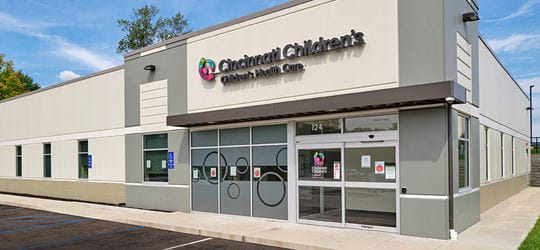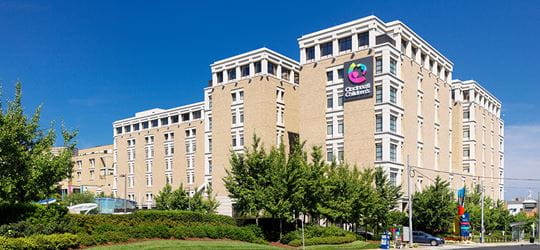
Smruti K. Patel, MD
- Neurosurgeon, Division of Pediatric Neurosurgery
- Director, Pituitary and Skull Base Surgery Program
- Director, Adult Neurosurgery Transition Clinic
- Assistant Professor, UC Department of Neurosurgery
About
Biography
As a pediatric neurosurgeon, I specialize in treating various neurosurgical conditions and disorders. I'm especially interested in neuro-oncology, skull base surgery, transitional care for spina bifida patients and fetal neurosurgery. I believe that excellent patient care involves pushing the envelope and using the latest techniques and cutting-edge advances at Cincinnati Children's. It also means listening carefully to our patients and actively involving them in their care.
My interest in neurosciences peaked in college, and I couldn't think of a better way to make a direct difference in people's lives than becoming a neurosurgeon. Early in residency training, my desire to pursue pediatric neurosurgery was sparked by several mentors I now have the privilege of working alongside
I love children and caring for them. The bond we create with our patients and families is unparalleled in pediatrics while treating acute and chronic diseases. Our goal is to change the outcome together, involving patients, families, and the appropriate staff and providers to deliver the best care and support possible.
One of my biggest goals is to provide excellent care efficiently, and I pride myself on clear communication with patients and families. I practice with patience and perspective, as I am a parent myself. I'm also a big proponent of multidisciplinary care and working with other colleagues within the healthcare system to provide the best holistic care.
In particular, as patients age, transitioning can be difficult as children enter adolescence and work toward developing independence in adulthood. This transition amplifies with a neurosurgical diagnosis. Our goal within my practice, the division and the institution is to help make this transition as easy as possible.
My clinical research interests within pediatric neurosurgery are broad, primarily focusing on how we can deliver the best and most equitable care to our patients and improve our outcomes and ability to counsel patients about their conditions.
I'm an active member of the American Association of Clinical Neurosurgeons/Congress of Neurological Surgeons (AANS/CNS) Joint Section on Pediatric Neurological Surgery and serve as co-chair of the Timothy George Committee on Diversity and Inclusion in Pediatric Neurosurgery. I am actively involved with the Association of Women Surgeons (AWS) as part of the Coaching Project and blog subcommittee. I was named one of the Future Women Leaders in Neurosurgery by the CNS Foundation and highlighted as one of AWS's top 40 under 40 (2022). I received the AWS Breaking the Glass Ceiling Leadership Education Program Award (2023). I also serve as a mentor and sponsor to undergraduate and medical students interested in neurosurgery and to surgical and neurosurgical trainees.
I enjoy spending my free time with my husband and two children. As a family, we love traveling to new places and experiencing all the different cultures we can!
MD: Rutgers, The State University of New Jersey; New Jersey Medical School, Newark, NJ, 2013.
Residency: Neurosurgery, University of Cincinnati College of Medicine, University of Cincinnati Medical Center, Cincinnati, OH, 2020.
Fellowship: Pediatric Neurosurgery, Cincinnati Children's Hospital Medical Center, Cincinnati, OH, 2021.
Board Eligible: ABNS/ABPNS.
Interests
Pediatric Neurosurgery; brain tumors; skull base surgery; pituitary surgery; spina bifida; transitional care; fetal surgery
Interests
Spina bifida; transitional care; fetal neurosurgery; neuro-oncology; pediatric skull base surgery
Research Areas
Locations (2)
Insurance Information
Cincinnati Children's strives to accept a wide variety of health plans. Please contact your health insurance carrier to verify coverage for your specific benefit plan.
Publications
Smartphone Magnetometers for Assessing Programmable Shunt Valve Settings: A Proof-of-Concept Study. Neurosurgery. 2025; 96:1166-1170.
Primary Giant Cell Tumor of the Skull Base with Hmga::Ncor2 Fusion: An Ultra-Rare Entity in the Young Pediatric Patient. Journal of Neurological Surgery, Part B: Skull Base. 2025; 86:s1-s576.
Imaging-Based Prediction Parameters of Perinatal Morbidity and Mortality for Fetal Occipital Cephaloceles. Prenatal Diagnosis. 2024; 44:1327-1334.
Utility of the material community deprivation index as a metric to identify at-risk children for severe traumatic brain injury. Neurosurgical Focus. 2023; 55:E8.
Effect of allograft patch closure on incidence of spinal inclusion cyst formation following open fetal myelomeningocele repair. Journal of Neurosurgery: Pediatrics. 2023; 32:141-148.
DIPG-20. DELINEATING MEDIATORS OF ONCOGENESIS IN FOXR2-EXPRESSING DIFFUSE MIDLINE GLIOMAS. Neuro-Oncology. 2023; 25:i17.
Abstract 3562: Dissecting mechanisms underlying FOXR2 -mediated gliomagenesis in diffuse midline gliomas. Cancer Research. 2023; 83:3562.
Dandy-Walker Syndrome. Youmans and Winn Neurological Surgery Volumes 1 4 8th Edition. 2023.
Posterior Quadrant Disconnection Procedure for Intractable Epilepsy: A Case Series of 5 Young Pediatric Patients. Operative Neurosurgery. 2022; 23:449-456.
FOXR2 Is an Epigenetically Regulated Pan-Cancer Oncogene That Activates ETS Transcriptional Circuits. Cancer Research. 2022; 82:2980-3001.






Patient Ratings and Comments
All patient satisfaction ratings and comments are submitted by actual patients and verified by a leading independent experience management company, Qualtrics. Patient identities are withheld to ensure confidentiality and privacy. Only those providers whose satisfaction surveys are administered through Cincinnati Children’s Hospital Medical Center are displayed. Click here to learn more about our survey